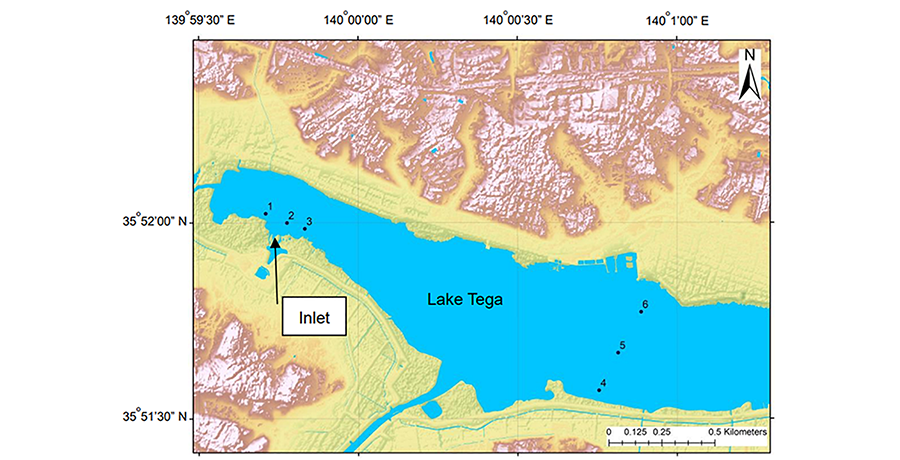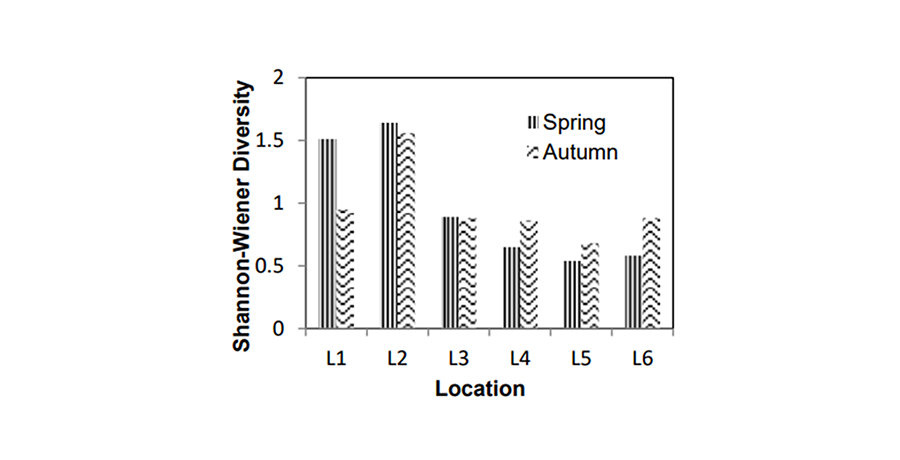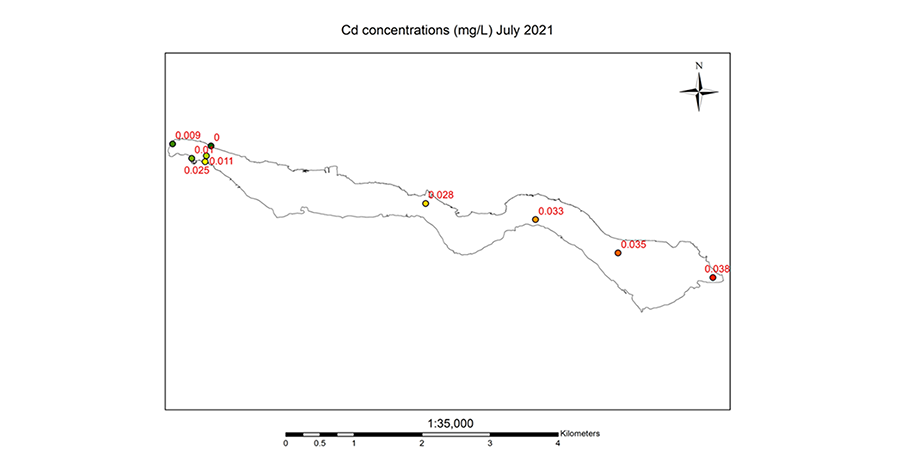Brief Introduction of Study on Lake Tega
Research works on the assessment of effectiveness of water management practices in long-term are limited and conducted largely without sufficient cross-sector probe.
As part of the branding undertaking, efforts were made to shed new light on the long-term effectiveness of water policies and management in improving water quality through case studies. Lake Tega is one of the cases selected. It was listed as the worst like in Japan for 27 years. A major operation to restore the lake’s ecosystem is to divert water from the Tone river to the lake, which started from 2000. Our study was aimed at assessing the effectiveness of this water diversion project over a long period of time from 2000 to 2019.
The present study investigated the target water body by field survey of both conventional chemical parameters and microorganism communities, and flow dynamics as well. For trend analysis, it employed the change point analysis, which uses a combination of cumulative sum charts (CUSUM) and bootstrapping, to detect the points of change over a long period of time.
Further, it investigated heavy metal pollution in the lake, which has been neglected up to now.
Outcomes
It highlights the fact that the widely used chemical assessment using conventional water quality parameters such as chemical oxygen demand (COD), pH, dissolved oxygen (DO), electrical conductivity (EC) and nutrients may not be conclusive and the combination with biological assessments such as phytoplankton community structure can be effective in evaluating the long-term effect of water management.
Some of the results are presented below.

Fig. 1 Sampling locations

Fig. 2 Spatial and seasonal variation of phytoplankton biodiversity index
It shows the spatial and seasonal change of Shannon-Wiener Diversity Index for the phytoplankton community at several locations in the lake. It can be seen clearly that the index peaked near the inlet of the diversion channel in both seasons and the values at all surveyed locations were much lower than the value of 3. This indicates that although the diversion project led to the shift in phytoplankton community structure from blue-green algae-dominated to diatom-dominated, the lake is still in a highly eutrophic state and the improvement in phytoplankton biodiversity by the project is limited in space. Besides which, although this shift to the diatom-dominated algae community eliminated the odor problem, it did not improve the light condition in the lake. Our measurement at the central location of the lake in autumn 2017, 2018 and 2019 showed that the SD depths were as low as 0.23, 0.3 and 0.22 m, respectively, which is close to the levels seen in the 1970s. It appeared that the water diversion project did not improve the transparency of the lake. The low transparency is considered as the mechanism that has been hindering the recovery of the submerged vegetation community in the lake.
Based on these findings, the direction for further improvement work should be the further reduction of nutrients, especially nitrogen loading from the water being diverted into the lake. Such a reduction of nitrogen loading may suppress excessive diatom growth and consequently improve the water transparency of the lake. With improved underwater light conditions, there is a much better chance for the submerged vegetation community to come back, leading to a true restoration of the lake ecosystem.

Fig. 3 Heavy metal pollution in the lake




